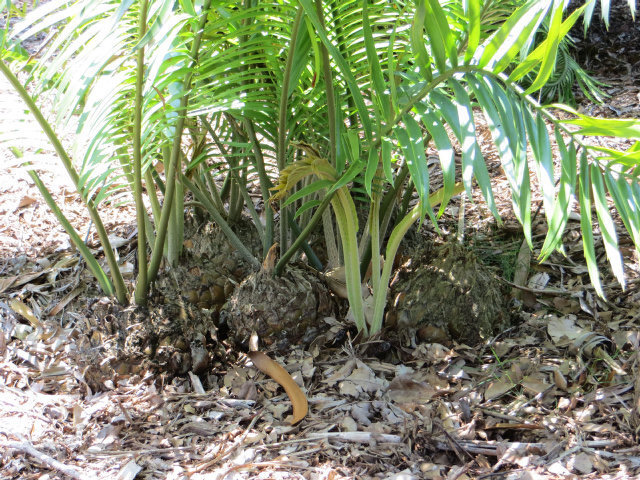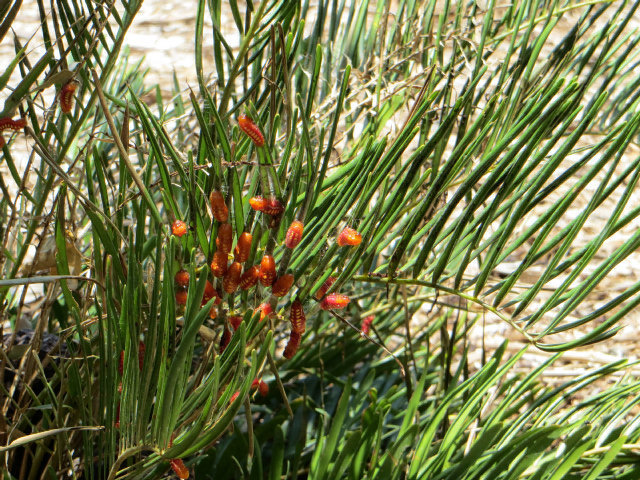Three Tricks to Growing Healthy Cycads
Cycads are among the oldest plants on earth, often called “living fossils.” Living in almost any condition, these plants are extremely hardy. If they were tough enough to survive the conditions that ended the dinosaur dynasty, they can live through almost anything. Yet today, habitat destruction threatens the survival of these sturdy plants. Despite their toughness, many cycad collections are suffering in cultivation. Incorrect gardening habits foster this failure. Here are some tips to help your cycads not only survive, but flourish.
Take Care When Using Mulch
Many beautifully landscaped yards are helped by the use of mulch. Mulch is a wonderful tool that increases organic matter and nutrients around our plants and decreases the growth of weeds. However, mulch is a major deterrent of cycad growth. The base of the cycad is usually characterized by a nice round bud that is somewhat soft. When mulch gets too close to the base, the soft part begins to rot and spreads infection through the cycad. After a few months of heavy mulching around cycads, the newest leaves will start to wilt.

Cycads learned to combat dinosaurs, but have no natural defense against rot-inducing mulch. If mulch is essential in your landscape, make sure to push it at least a foot away from the base of the cycad. After heavy rains, common during South Florida summers, check that the mulch hasn’t moved into this mulch-free zone.
Pay Attention to Planting Depth
Zamia integrifolia, or the Florida coontie, is growing in popularity as a landscape ornamental. The newest leaves invite the Atala caterpillar, the larvae of a native Florida butterfly, to feast. Yet, many of the coontie plants in South Florida backyards are struggling.
A common mistake made with the coontie and many other cycads is planting depth. In many gardens, the base of the cycad is buried underground, much like a ground orchid bulb. The result is severe decay; similar to what heavy mulching causes. Burying the base underground suffocates the cycad, increases chance of rot and stops the individual from producing new leaves.
For many, the reason for planting the coontie is to attract butterflies. But by burying your Zamia underground, no new leaves can form and the cycad will not lure butterflies to your backyard. Even if you are not growing the coontie, it is important for all cycads to be planted at the correct depth in order to encourage healthy growth. The correct depth is directly below the base of the cycad and above where the roots start.

Don’t Remove the Pup
For many cycads, strength and health are measured by the ability to grow pups. This is a form of asexual reproduction in which the individual is able to grow a new center of growth off of the current base. Many people wish to keep their cycad small; in order to achieve a more manageable plant, they remove the pup. There is no reason to remove the pup from the parent in your backyard. Removal of the pup could potentially damage the cycad beyond repair, and there is a risk of losing the parent and the pup to infection, rot and disease.
If the goal is to keep the cycad manageable, try trimming back the leaves. Cycads respond very well to trimming in the fall months as long as no damage is done to the base of the individual. Cycads will continue to grow in size throughout their life so it’s essential to select a space that can handle a big plant.
The main method to maintain a healthy cycad collection is to keep your cycads dry and free of rot. Cycads survived eons of harsh conditions and now many struggle in the landscape. Help maintain our living fossils by keeping mulch away from the base, planting them at the correct depth and not removing pups from the parent. Ensure the cycads’ survival by allowing them to thrive in our yards.
This article was written by Sara Edelman and was originally published in the Miami Herald. Sara Edelman is Palm and Cycad Manager at Fairchild Tropical Botanic Garden. Minor changes from the print version of this article were introduced to improve readability in a digital format.
